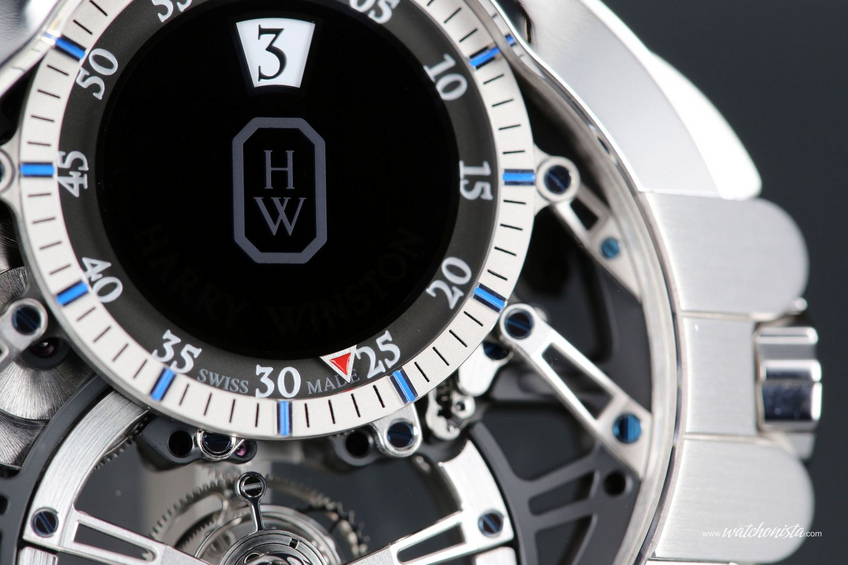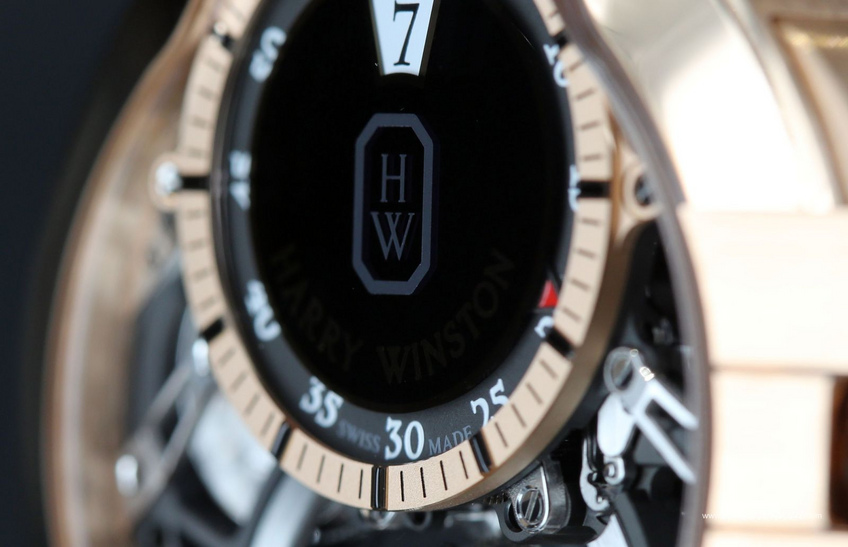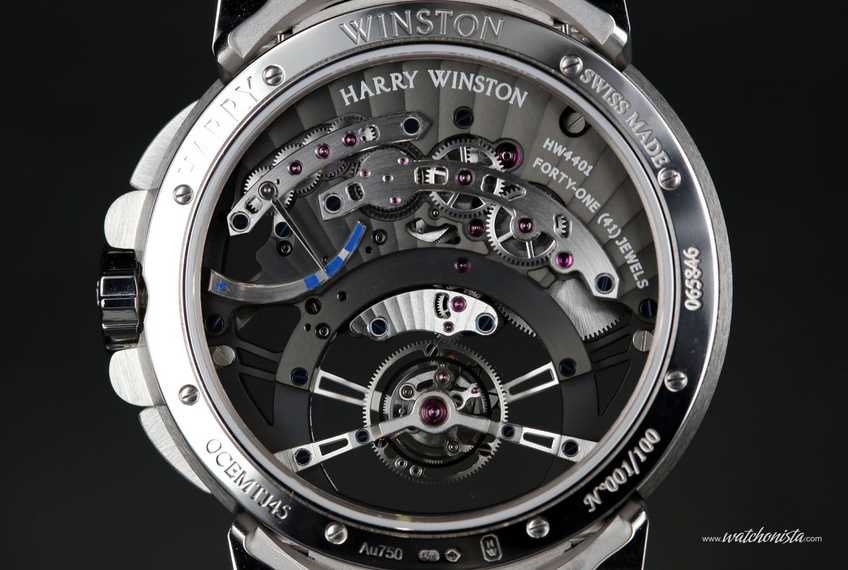

Ocean Tourbillon Jumping Hour by Harry Winston
In 2013, Harry Winston released a tourbillon with jumping hours in its Ocean Collection. The question remains: how did the brand manage to adopt an architectural style and use it to combine these two complications for the first time ever?
Newly introduced in The Ocean Collection, the jumping hours complication contributes its share of dynamism to an in-house manually-wound calibre that was the result of more than 1,500 hours of development, the HW4401.

Harry Winston's architectural vocabulary
The construction makes use of cantilever-like elements to produce a complex movement that oscillates at 28’000 vibrations per hour and revels in a strong architectural language.
It involves bridges and connecting points and the balance between the aesthetically improbable and the technically feasible. Instead of being fitted at the back of the mainplate – the central component of any mechanical calibre – the tourbillon is unconventionally suspended from two shiny steel bridges, each bevelled by hand. So it appears to be floating, an illusion reinforced by the fact that at first glance nothing seems to connect it with the rest of the 330-component micromechanical assembly. In fact, if you take a closer look, it is an almost imperceptible gearwheel on its circumference that meshes with the movement to drive the tourbillon.

The levitation effect continues with the skeletonised movement, which is held between two transparent sapphire crystals and contrasts sharply with the black of a dial exuding an intense opacity. The dial itself is held by a system of skeletonised bridges. As for the finishing of the bridges, it has witnessed the subtle interventions of the human hand. The 18-karat white or pink gold timepiece displays time instant jumping hours in an aperture at 12 o’clock. In order not to obstruct them, the minute hand has been specially conceived so as to avoid passing over the hours. The power reserve display, which reaches to 110 hours, can be seen only at the back of the case.

The Ocean Tourbillon Jumping Hour comes in four limited series
By playing with glass and steel, the Harry Winston Ocean Tourbillon Jumping Hour indulges in a daring geometry that makes best use of the materials' structural properties and aesthetic features. In the final analysis, this union between a tourbillon cage turning once in 60 seconds – thus acting as the seconds hand – and a minute hand completing its circumference in one hour, represents a very personal celebration of mechanics. The model comes in four limited editions, two of ten pieces, the baguette-set versions (58 diamonds of about 6,25 carats) and two of 75 pieces in pink gold and white gold for the non-set versions.
















